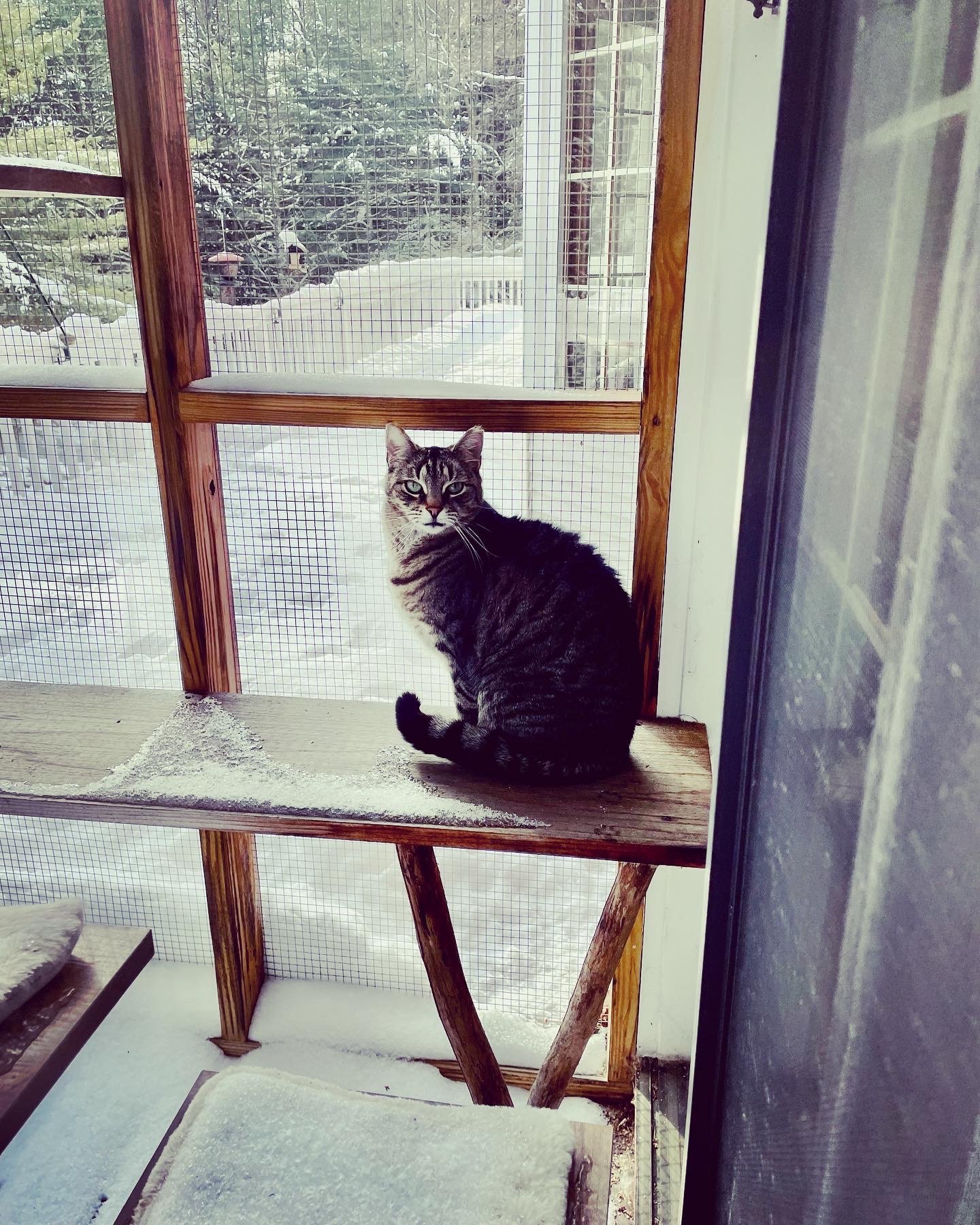OPINION: Trapping season starts Oct. 28; baited traps threaten all animals
Oct. 26, 2023 | By Brenna GaldenziThe author's cat, Carbone, enjoys his outside screened enclosure called a "catio." Photo by Brenna Galdenzi
Vermont’s trapping season begins on the fourth Saturday of October and runs through March 31 each year.
The season for land trapping ends on Dec. 31, however, trapping continues through the end of March as long as traps are placed in the water, including shallow streams. Traps set in the water present a danger to non-targeted animals, as evidenced by the dog that was trapped and injured in a beaver trap in Castleton on Oct. 3.
According to the Vermont Department of Fish & Wildlife, an average of 8,200 animals considered "furbearers" are reported trapped and killed each year, including bobcats, otters, and foxes. Every trapping season dogs, cats, and other non-targeted animals, including protected species, are injured and even killed in traps. Just last year, 15 pets were reported trapped in Vermont — three died.
Protect Our Wildlife remains concerned by the effects of climate change as well as loss of habitat, biodiversity and emerging diseases.
"The indiscriminate nature of trapping, which can quickly destroy critical ecosystems, presents an environmental danger that has no place in an already challenged world," said Vermont Conservation Biologist Jennifer Lovett.
Documents obtained by Protect Our Wildlife through a public records request reveal that during the 2020 trapping season, one Vermont trapper killed 11 fisher, a vital predator species that helps manage small mammal and rodent populations. That level of localized killing places populations at risk.
According to Vermont Fish & Wildlife's 2023 furbearer newsletter, 93% of fishers tested positive for rodenticide poisoning. Given this known threat to fisher populations, Fish & Wildlife should swiftly enact a moratorium on fisher trapping, but instead they carry on with business as usual.
Traps may be set on private (with permission) and public lands, including National Wildlife Refuges that are home to endangered and threatened species. Trappers are not required to place signs indicating where they’re trapping, so it is difficult for the public to know where traps are set. Baits and lures are used with traps, so a baited leghold trap set for a fox can just as easily trap a red-tailed hawk or someone's domestic animal.
Dr. Peggy Larson, a retired Vermont veterinarian, stated, “I am a veterinarian who has treated dogs and cats caught in traps. The injuries they suffered were horrendous.”
Protect Our Wildlife’s website provides a video tutorial with instructions on how to release a companion animal from a trap. If an animal is caught in a body-crushing kill trap, survival is less likely since these traps are designed to kill animals.
Some tips:
• Know when trapping season is, but remember that traps set out of season, as allowed under Vermont’s “wild animals doing damage” statute, or traps left behind after the season ends, still present a threat.
• Remember that traps can be set in shallow water, so always check before allowing your dog to drink or swim.
• Keep cats indoors or create an escape-proof fenced-in yard or catio.
Brenna Galdenzi is president and co-founder of the nonprofit wildlife advocacy organization, Protect Our Wildlife VT, with a mission to make Vermont more humane for wildlife.

